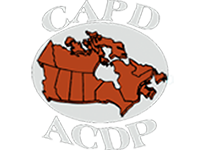|
VISIT THE CAPD/ACDP -TOURISM CALGARY MICROSITE FOR INSPIRATION! VISITEZ LE MICROSITE CAPD/ACDP -TOURISME CALGARY POUR VOUS INSPIRER! |
 |
|
-medium.jpg) |
CALGARY : REMARKABLE EXPERIENCES FROM ARRIVAL TO DEPARTUREA brief introduction from Wikipedia Calgary is the largest city in the Canadian province of Alberta. As of 2021, the city proper had a population of 1,306,784 and a metropolitan population of 1,680,000 making it the third-largest city and fifth-largest metropolitan area in Canada. Calgary is at the confluence of the Bow River and the Elbow River in the southwest of the province, in the transitional area between the Rocky Mountain Foothills and the Canadian Prairies, about 80 km (50 mi) east of the front ranges of the Canadian Rockies, roughly 299 km (186 mi) south of the provincial capital of Edmonton and approximately 240 km (150 mi) north of the Canada–United States border. In 1875, Fort Brisbois was a Mounted Police post, named after Ephrem Brisbois, the first commander. It was renamed Fort Calgary in June, 1876 by Colonel James Macleod, the Commissioner of the North-West Mounted Police, after Calgary House on the Isle of Mull in Scotland, a place he had visited. Calgary, in Gaelic, means "beach of the meadown" or "bay farm". The Indigenous peoples of Southern Alberta refer to the Calgary area as "elbow", in reference to the sharp bend made by the Bow River and the Elbow River. In some cases, the area was named after the reeds that grew along the riverbanks, reeds that had been used to fashion bow The area has been inhabited by multiple First Nations for at least 11,000 years: the Niitsitapi (Blackfoot Confederacy; Siksika, Kainai, Piikani), îyârhe Nakoda, Tsuutʼina peoples and Métis Nation, Region 3. And in 2025, Calgary Tourism notes... Calgary is a place on the fringe - familiar, but largely undiscovered. From its bustling downtown to character-filled neighbourhoods, Calgary is full of secrets, surprises, and stories — and Calgarians are eager to share those experiences with the world. Renowned for its warm western hospitality, Calgary prides itself on being the Ultimate Host City. With one of the world’s most modern, welcoming airports, world-class accommodations and venues, an exploding culinary, arts and culture scene, and an impressive list of attractions and activities to suit every type of visitor, Calgary is a city that delivers a remarkable experience from arrival to departure. |
CALGARY : DES EXPÉRIENCES REMARQUABLES DE L'ARRIVÉE AU DÉPART.Une brève introduction de Wikipédia: Calgary est la plus grande ville de la province canadienne de l'Alberta. En 2021, la ville proprement dite comptait 1 306 784 habitants et une population métropolitaine de 1 680 000 habitants, ce qui en fait la troisième plus grande ville et la cinquième plus grande région métropolitaine du Canada. Calgary est au confluent de la rivière Bow et de la rivière Elbow, dans le sud-ouest de la province, dans la zone de transition entre les contreforts des montagnes Rocheuses et les Prairies canadiennes, à environ 80 km (50 mi) à l'est des chaînes frontales des Rocheuses canadiennes. , à environ 299 km (186 mi) au sud de la capitale provinciale d'Edmonton et à environ 240 km (150 mi) au nord de la frontière canado-américaine. En 1875, Fort Brisbois était un poste de la Police à cheval, du nom d'Ephrem Brisbois, le premier commandant. Il a été rebaptisé Fort Calgary en juin 1876 par le colonel James Macleod, commissaire de la Police à cheval du Nord-Ouest, en hommage à Calgary House sur l'île de Mull en Écosse, un endroit qu'il avait visité. Calgary, en gaélique, signifie « plage du pré » ou « ferme de la baie ».Les peuples autochtones du sud de l'Alberta appellent la région de Calgary « coude », en référence au coude abrupt formé par la rivière Bow et la rivière Elbow. Dans certains cas, la zone doit son nom aux roseaux qui poussaient le long des berges de la rivière, roseaux qui étaient utilisés pour fabriquer des arcs. La région est habitée par plusieurs Premières Nations depuis au moins 11 000 ans : les Niitsitapi (Confédération des Pieds-Noirs ; Siksika, Kainai, Piikani), les îyârhe Nakoda, les peuples Tsuutʼina et la Nation métisse, région 3. Et en 2025, Calgary Tourism note... Calgary est un endroit marginal – familier, mais largement méconnu. De son centre-ville animé à ses quartiers pleins de caractère, Calgary regorge de secrets, de surprises et d'histoires — et les Calgariens sont impatients de partager ces expériences avec le monde. Réputée pour sa chaleureuse hospitalité occidentale, Calgary est fière d'être la ville hôte par excellence. Avec l'un des aéroports les plus modernes et les plus accueillants au monde, des hébergements et des lieux de classe mondiale, une scène culinaire, artistique et culturelle en plein essor et une liste impressionnante d'attractions et d'activités pour tous les types de visiteurs, Calgary est une ville qui offre une expérience remarquable. expérience de l'arrivée au départ. |
 CAPD/ACDP 2025
CAPD/ACDP 2025-medium.jpg)
